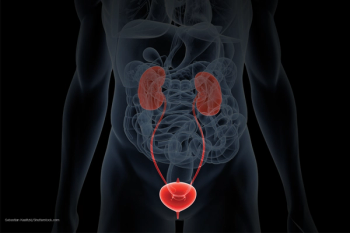
Large diabetes population spurs innovation
Medicines that better control glucose and more efficient dosing needed
New innovations and therapies are needed in the diabetes market to effectively and efficiently treat the ever-growing diabetes population. Unmet medical needs of diabetic patients include medicines that better control glucose and more efficient dosing of insulin to increase patient compliance and outcomes, according to a recent Drug Information Assn. report.
“One in 10 adults in the United States is affected by diabetes, and as many as one in three U.S. adults could be living with diabetes by 2040. Part of the significant chronic burden of diabetes is just the sheer numbers of people who will need treatment,” says David M. Kendall, MD, distinguished medical fellow with Lilly Diabetes and Eli Lilly and Company. “These chronic disease patients come to the health system with a substantial risk of characteristic diabetes-related complications, such as cardiovascular disease, high blood pressure, high cholesterol, non-congenital end-stage renal disease, and non-traumatic amputation disabilities.”
Predictions of the financial and health burdens have risen in recent years.
“The enormous public health and financial impact of diabetes continues to be underestimated. More people are affected, people are affected at younger ages, and people who have diabetes for more of their lives add to the burden of diabetes,” says Dr. Kendall, who previously served as chief scientific and medical officer for the American Diabetes Assn. (ADA) and medical director at the International Diabetes Center in Minneapolis.
The total estimated cost of diagnosed diabetes in 2012 is $245 billion, including $176 billion in direct medical costs and $69 billion in reduced productivity, according to a recent study Economic Costs of Diabetes in the U.S. in 2012 from the ADA. Data show a 41% increase from the previous estimate of $174 billion (in 2007 dollars).
Meeting Individual Needs
According to Alan Moses, global chief medical officer, Novo Nordisk, despite an array of highly useful medications, diabetes remains out of control in three respects:
- The global epidemic of diabetes;
- Increasing incidence of type 1 diabetes (especially in younger populations); and
- Inadequate control of glucose levels because too few individuals reach the targeted levels of glucose.
“These three aspects of diabetes represent a huge unmet need,” he says, noting that innovative medications will provide an opportunity to improve patient outcomes and also simplify life for patients and the healthcare professionals who treat them.
Numerous categories of drugs are available to treat type 1 or type diabetes 2 alone or in combination. It seems that while the improvement in care of diabetes-in particular blood sugar control-has been observed, a significant population with diabetes still fails to achieve acceptable levels of control of their condition. They also are managing other disease-related complications.
“How new and innovative treatments can most effectively be applied to a larger and larger population remains a significant clinical challenge,” Dr. Kendall says.
As such, diabetes patients type 1 or 2 require a combination of approaches-ranging from lifestyle changes to established current medications to combinations of new, existing or future medications-based on their individual needs and characteristics and a broad portfolio of customizable therapies.
Some of the newer diabetes medications in development are variations on existing types or classes of medication, for example, a drug that can be administered less frequently for better patient compliance. Improved long-term glucose control could eliminate additional doctor visits or hospital stays.
“Also in development are various different types of pills with unique mechanisms that we think can currently and in the future will be combined together to better control blood sugar,” Dr. Kendall says.
The goal of future innovation is to have varied treatment options that serve this ever-growing population of individuals to reduce the long-term health and financial burden, he says.
Newsletter
Get the latest industry news, event updates, and more from Managed healthcare Executive.


















































